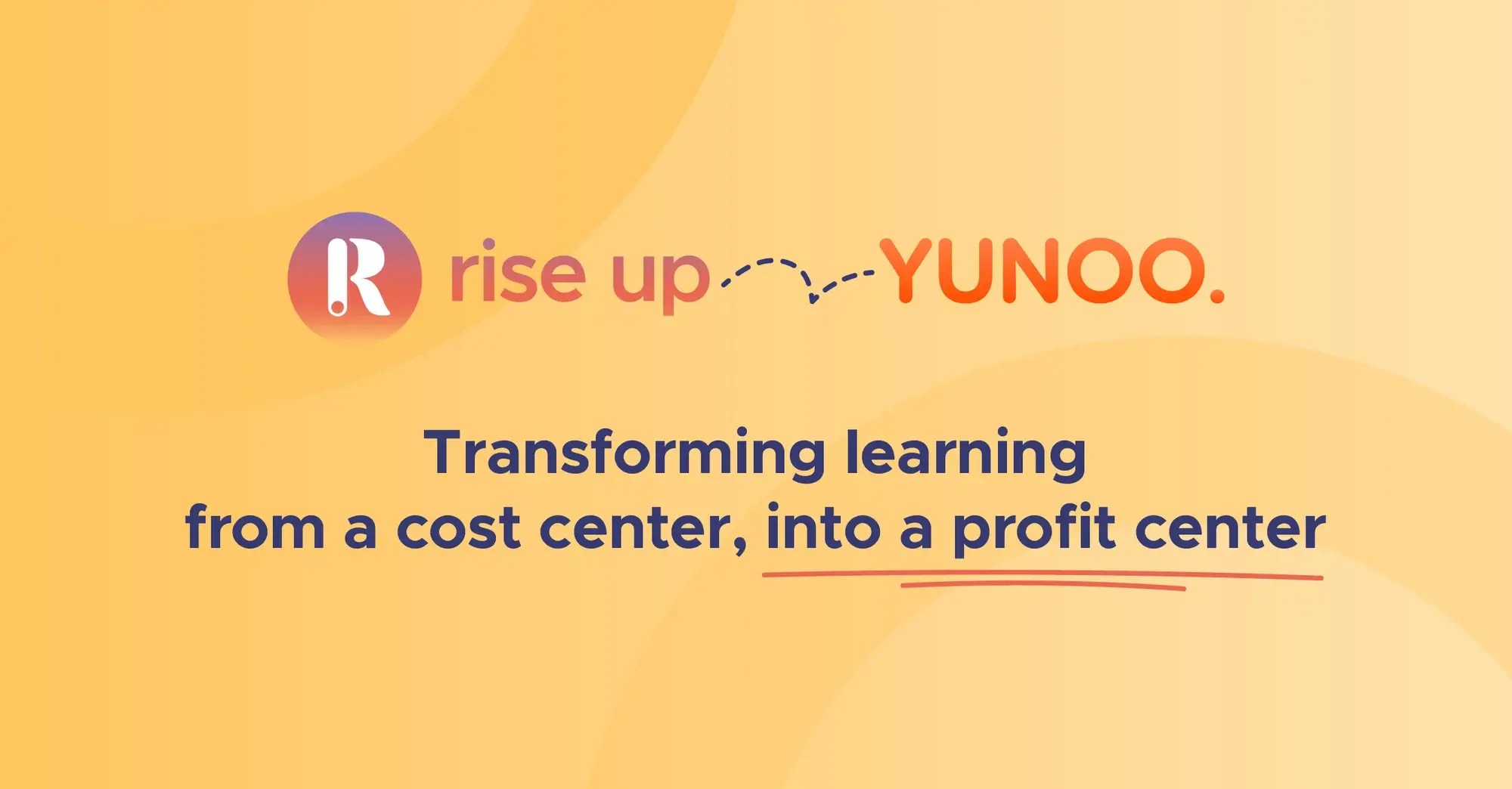Everything you need to know about LXPs
13 minutes of reading | 2022-02-23
LXP software is widely used by all kinds of businesses for their training needs. However, you might not be totally familiar with the possibilities offered by LXPs—or, to give them their full title, learning experience platforms.
There are plenty of reasons to learn more about LXPs. Maybe your business has already invested in a platform, but you haven’t quite taken advantage of its full potential. Perhaps you’re still fact-finding before making a purchase, or just trying to get a better understanding of how they work. Whatever your situation may be, this article will aim to answer all of your questions about LXPs.
From adaptive learning to mobile learning, we’ll go through the many features and advantages of learning experience platforms. We’ll also highlight how an LXP can help to increase engagement amongst your employees and boost your business’ performance.
What is an LXP?
LXP definition
Let's start by defining what an LXP is. Learning experience platforms, or LXPs, are a category of educational software centred around user experience. It is designed with the learner in mind at every stage, and aims to offer the right teaching methods, content and personalised training pathways in order to ensure each user is able to gain new skills as quickly as possible. (Note that LEP is another acronym used for the same term!)
LXPs share some similarities with learning management systems (LMS), which are a separate category of software. Be careful not to confuse the two! LMSs focus primarily on how training is delivered and administered. Indeed, it’s the learner-centred nature of LXPs that sets them apart and made them revolutionary in the world of professional training.
The purpose of an LXP
We know now that LXPs focus on giving learners the best possible experience—but what’s the reason for this user-centred approach? The simple answer is that employee satisfaction drives better results. When your team is motivated to learn and finds their training journey enriching and rewarding, they’ll not only be more likely to complete it successfully, but will also apply their new skills more effectively on the job.
Good user interface (UI) and user experience (UX) design is key for any LXP, as they enable learners to navigate the platform easily and intuitively. A lot of work is put into ensuring excellent usability as well as high-quality features. One example of this principle is the creation of responsive apps for smartphones and tablets. These apps even have their own training materials that are especially suited for these devices, such as microlearning modules that take just minutes to complete.
Additionally, LXPs use artificial intelligence to provide learners with training personalised to their needs, as well as targeted support. This AI is able to understand how individuals use the platform and, as a result, can detect their preferences. Using this information, it can provide them with recommendations that suit them best. This feature is known as adaptive learning.
Finally, LXPs aim to avoid a situation common in e-learning, where learners are left to complete courses on their own, typically by watching long, tedious videos. Learning experience platforms instead work to bring learners together by making it easy to create communities based on shared interests and objectives. They also allow trainers to lead interactive virtual classes—a key part of digital learning.
LXP: the importance of social interaction
Social interaction is a key aspect of how learning experience platforms work. To understand why this is the case, we need to think about the way people learn new skills.
Human beings need to be around others in order to grow and to gain essential life skills. Being social creatures, contact with those around us is key to our development. Important insights on how this works have been gained through the study of social learning.
This field of study stems from the work of Canadian psychologist Albert Bandura in the 1960s. He demonstrated how we gain new skills through observation: we see how those around us act, and tend to pattern our behaviour after this.
LXPs take this theory and apply it to the world of professional training, incorporating the latest teaching methods in the process. They do so by creating social environments that make this kind of ‘behavioural mimicry’ possible.
Within an LXP, this is known as a community space, and it uses the same model as a social network. Learners can simply log on using their smartphone and connect with colleagues anywhere, anytime. They can then chat, comment, share and post about the topic they’re learning about at that time.
LXP: how to focus on your learners
LXPs are, at their heart, learner-centred, and ensuring that your employees get the most out of their use of the platform is key to helping them succeed in their training. So, what steps can you take to improve the learner experience using an LXP?
Choose blended learning
First off, make use of the platform’s blended learning features, which allow your employees to benefit from a variety of training methods. This approach involves a mix of face-to-face and online tuition, and means that you can harness the advantages of both to give your learners a better training experience.
In-person sessions can be used to lay the groundwork for the training course, while online training gives learners more freedom and autonomy. Meanwhile, learners can gain additional knowledge via e-learning modules, then apply these skills during classroom sessions. Additionally, trainers can initiate group activities during a face-to-face class, then get their learners to carry on this work online using message boards and community spaces. Using these examples, it’s easy to see how these two methods fit together so perfectly.

Rethink content
When transferring your content onto an LXP, it can be tempting to stick to the same methods you’ve always used. This, however, would mean missing out on the wealth of possibilities the platform has to offer. So, mix it up! Try out a variety of different types of training material, from video and audio to infographics—whatever is best to give your learners the best possible experience. With an LXP, this task couldn’t be simpler.
Focus on tutoring
When learners have little contact with others, they tend to lose motivation, and can even end up dropping out of their course altogether. This can be avoided by ensuring each individual has access to a tutor. They act as a point of contact for the learner throughout their training, which may be fully online or blended. If an employee wants to get in touch with their tutor, they can simply send them a message using the LXP’s built-in chat feature.
Boost learner engagement with an LXP
We’ve already covered some of the ways in which an LXP strengthens learner engagement: first, through its focus on social interaction; second, via blended learning, enhanced content and the availability of tutoring. Now, we’ll move onto some more LXP features that aim to achieve the same goal.
First amongst these is social learning. Unlike with traditional e-learning, in which employees are only passive participants, social learning enables them to take an active role in the training process. Instead of a system in which trainers speak and learners pay attention, this approach enables everyone to play a part in sharing information. Everyone is thus part of a single community that encompasses learners and trainers, and in which members work together to develop their skills.
Next up is adaptive learning. We’ve already touched upon how, in this system, AI enables learners to choose their own pathway. It does this by giving them personalised learning recommendations for content which will best suit their needs and interests.
Finally, there’s mobile learning. Thanks to this, employees can access their LXP app whenever they like. You can even view your learning content offline. It’s a practical, flexible approach to training that takes into account the variety of ways in which we all work today.
Thanks to its broad range of tools, LXP software is, therefore, ideally placed to help employees get the most out of their training and improve their performance.
LMS and LXP: what are the differences?
As two closely related categories of digital learning platforms, it’s not too surprising to see that people still struggle to tell their LMS from their LXP. We’ll now cover some of the most important differences between the two.
Management-focused vs learner-centric
We’ve talked at length about how LXPs help learners to take greater control over their own training. This is one of their key differences with LMSs. LXPs were created to address the needs of learners, while LMSs focus on other stakeholders within the process: administrators, managers and trainers.
An LMS platform, for example, makes it possible to reserve meeting rooms, handle onboarding for a specific course, generate legal documents or monitor the entire training process with just a few clicks.

Content for different goals
Let’s move on to resources. Here, LMSs tend to rely on e-learning modules, whereas LXPs offer a great deal of micro-content.
On an LXP, training sessions are kept short, generally lasting no more than a few minutes. For example, the learner may be asked to watch a quick video, read a blog article or listen to a podcast. Additionally, LXPs make it possible to put newfound skills into practice via interactive tools such as online group work. They also offer a range of tailored content that adapts to the learner over time.
LMS platforms, meanwhile, offer employees access to full courses via e-learning modules. These are usually in video format, and require more of the learner’s time. They’re a good option if you want to lay the foundations for a training pathway and provide more theoretical knowledge underpinning a specific skill set.
Solo vs community learning
On an LMS, employees learn by themselves, while on an LXP, they form part of a broader community. This is one of the major differences between an LXP and an LMS. It’s also one of the advantages of an LXP: by giving learners more of a chance to connect with one another as well as providing individual recommendations, it’s a great fit for the way we learn today.
So, which should you choose? LMS or LXP? The answer is: both! These two platforms are not meant to oppose one another, but instead complement each other. Some types of educational software, such as Rise Up, even combine LMS and LXP into a single platform.
Why use an LXP for your organisation? What are the benefits?
It’s time to look at the bigger picture. Beyond what an LXP can do for individual learners, what advantages can it bring to your business? We’ll provide a breakdown.
It saves you time
Using a learning experience platform can offer your company substantial time savings—particularly if you choose a hybrid LXP/LMS. With just one app, you can make training management easier than ever before. You can handle every task imaginable using this software, from registering new users to analysing their results, and from editing documents to obtaining electronic signatures. You can even automate tasks to get things done even faster.
You can easily create personalised training courses
We’ve already discussed how LXPs are able to offer each employee their own unique, individually tailored set of teaching methods and training modules. What’s more, the platform’s recommendations will evolve over time to match the user’s behaviour, ensuring that it’s always offering the most relevant, helpful content.
From a business standpoint, the benefit of this is clear. By offering each learner only those skills which are useful for their needs, efficiency is maximised. When they get back to their job, they’ll be ready to put their new skills to use. This means you can enjoy better results overall, and a more agile business that’s able to adapt quickly to changing market conditions.
More input = better content
With an LXP, learners themselves get the chance to contribute to the creation of new learning content. For example, one of your team might find useful information on a different website, then share it in a community space on the platform. If everyone takes part in this process, you can quickly gain input from employees, trainers, managers and more. This helps to enhance everyone’s understanding of the topic, leading to improved skills and better business performance.
LXP: learning methods
You now know how an LXP can lead to better results for both employees and businesses. We’ll now round things off by discussing the different learning methods you can access via your LXP software.
Social learning
With the advent of social learning, the dynamic of training has shifted. Instead of one trainer teaching a learner (or a class), everyone learns from one another. This is made possible by an LXP, through which you can easily create groups of like-minded learners. Groups can then share learning resources via a dedicated online community space. Additional features that also aid in the training process include chat and messaging facilities in the same vein as those found on social networks.
Mobile learning
Following on logically from social learning, we have mobile learning. This approach sees learners connecting to their LXP with their phone and communicating with others as they might do on Facebook or Twitter. It allows them to share and access micro-content, something which can help to solidify their understanding of a topic and retain their knowledge between more formal training sessions.
Mobile learning even allows learners to access the platform offline, so there are no barriers to when or where they’re able to view their training content. This is a feature that many employees are fond of, as it means they can fit training into their schedule much more easily.
Adaptive learning
One of the most game-changing aspects of an LXP is its adaptive learning functionality, which has already been discussed in this article. A quick recap: via data collection and artificial intelligence, the platform is able to offer a personalised training course to each individual. It takes into account the particular methods they have used most while on the app, their feedback and any results they have gained through assessments. It will also, of course, add in information regarding their current skill set, job role and professional goals.

Interactive learning
Interactive learning is at the heart of how an LXP works. This concept is at work, naturally, in the sphere of social learning. However, it also comes into play in virtual classrooms, which make it easier for employees and trainers to talk to one another. Using an array of different communication tools, learners can also work together in groups, ask questions in real time and take part in interactive quizzes, all in one place.
Gamification
The idea behind gamification is to generate a little healthy competition between learners in order to help encourage them to learn and improve their skills. With each milestone they reach, they gain rewards or new badges. This creates a virtuous circle which sees their motivation levels go up and increases their chances of success.
Also falling within the category of gamification are serious games or applied games. These take the framework of a video game and instead use it to put a learner’s knowledge to the test by asking them to apply it to a simulated scenario.
Blended learning
As you’ll undoubtedly recall, blended learning offers your business much-needed flexibility through its combination of in-person and online training. Plus, since learners can take advantage of both approaches, they’re more likely to succeed in their training. This is because, as well as having access to the variety of tools available to them via an LXP, they can also reap the benefits of face-to-face sessions: better relationships with their colleagues, the ability to easily ask their trainer questions, and a range of different group activities.
We’re now at the end of our guide to all things LXP! It’s clear by now that your business could have plenty to gain from a learning experience platform. If you want to see exactly what a platform like Rise Up can do for you, don’t forget to get in touch and request a demo today!






